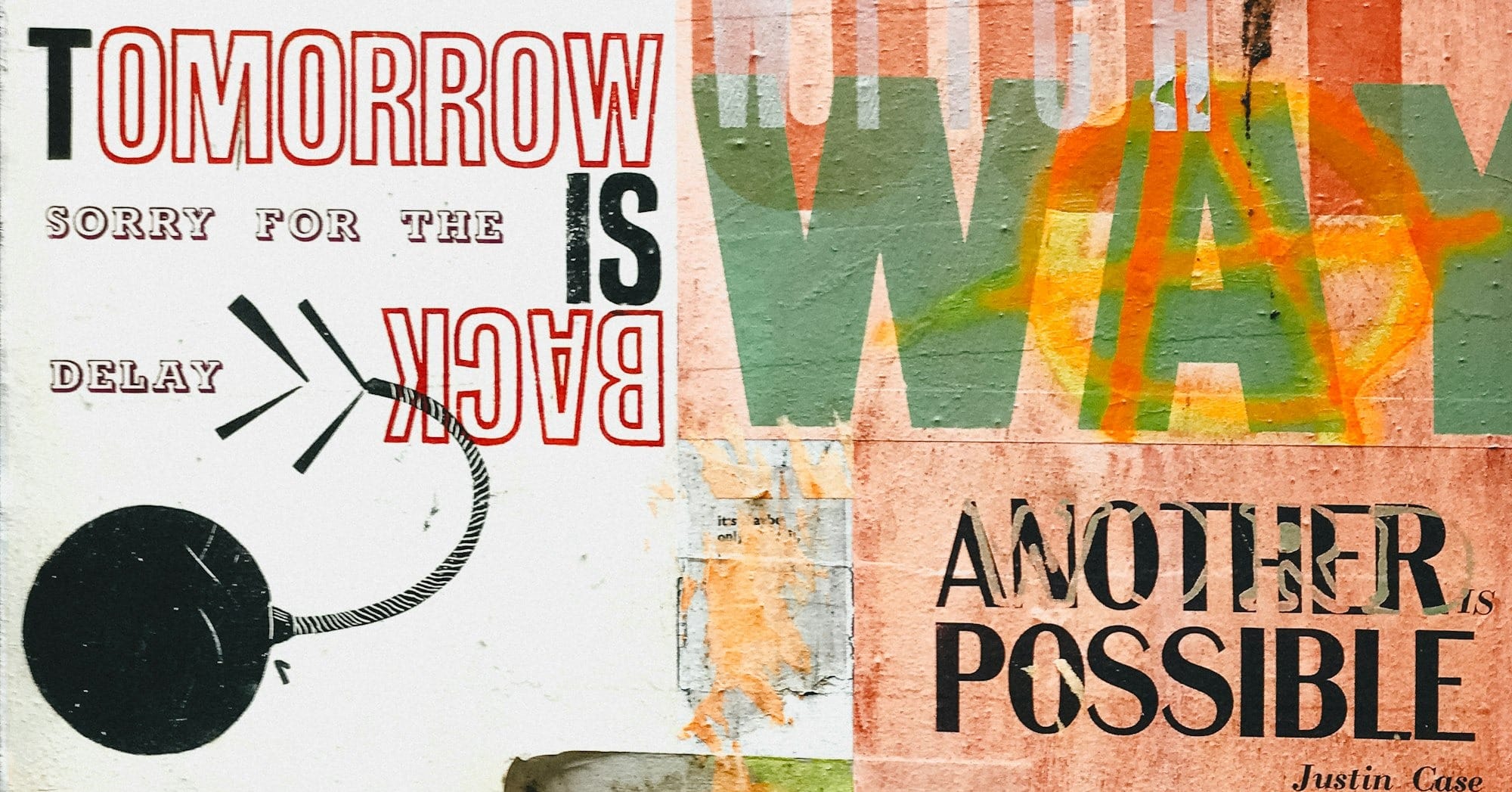Visual Collaging for Complex Thinking
Using magazine images and collaborative collaging to explore complex concepts through visual thinking. Reveals insights that analytical writing might miss, allowing students to hold complexity without immediate resolution. Works for any subject.

Class size suitable for: 8-40 students
Level suitable for: All levels (particularly effective with undergraduate students) Time needed: 45-60 minutes total
Class setup: Tables where students can spread materials and work collaboratively
Materials needed: Magazines, scissors, glue sticks, flipchart paper, coloured pens/markers
How This Embodies Teaching Otherwise
Visual collaging enables students to explore complexity and contradiction through creative juxtaposition rather than linear logic. It embodies care as curriculum by honouring different ways of knowing and making space for non-verbal intelligence. It demonstrates criticality as method by revealing assumptions and tensions that written analysis might miss. It activates collective imagination as essential work by positioning visual thinking as a legitimate form of academic inquiry.
This challenges the assumption that all academic thinking must happen through words. Images can hold complexity without needing to resolve it immediately, allowing students to explore relationships and contradictions that might be harder to articulate in writing.
Step-by-Step Instructions
Step 1: Material Setup and Framing (5 minutes)
Spread magazines across tables - aim for variety including business magazines, lifestyle publications, news magazines, and general interest. Avoid only using business-focused materials as diverse images generate richer thinking.
Frame the activity: "We're using images to think about [your concept/topic]. This isn't about creating pretty pictures - it's about accessing ideas and connections that analytical writing might miss. Trust your instincts about what images speak to you."
Example framing: "Today we're exploring workplace inclusion through visual collaging. You might find images related to periods and workplace health, but also look for images about power, silence, bodies, professionalism, care, policy - anything that connects to how organisations handle (or don't handle) aspects of human experience that are often invisible."
Emphasise process over product: "The thinking happens through making. There's no right answer or perfect collage."
Step 2: Individual Image Selection (10 minutes)
Students work individually, browsing magazines and tearing out images that connect to your topic in any way.
Using the workplace inclusion example: Students might choose images of bathrooms, medicine packets, professional clothing, boardrooms, calendars, faces showing pain or relief, hands, meetings, policies, or abstract images representing secrecy or openness. The power is in unexpected juxtapositions - what happens when you place an image of a business suit next to a hot water bottle?
Encourage them to:
- Choose images that catch their attention, even if they can't articulate why
- Include images that create tension or contradiction with each other
- Look beyond literal connections - metaphorical relationships matter
- Trust gut reactions rather than overthinking choices
Aim for 8-12 images per person. The tearing rather than careful cutting keeps the process loose and intuitive.
Step 3: Collaborative Collage Creation (20 minutes)
In groups of 3-4, students combine their images to create one collective collage on flipchart paper. This isn't about neat arrangement but about juxtaposition and relationship:
- What happens when you place these images next to each other?
- What tensions emerge? What unexpected connections?
- How do the images talk to each other about your topic?
- Use markers to add words, arrows, connections if helpful
The collaborative element is crucial - different perspectives on the same images generate new insights.
Step 4: Story Creation from Collage (10 minutes)
Each group looks at their completed collage and creates a story or narrative about what they see in relation to your topic:
- What's happening in this visual world?
- What does this tell us about [your concept/topic]?
- What questions does this raise that we haven't considered?
- What contradictions or tensions are visible here?
The story doesn't need to be neat or resolved - complexity and ambiguity are valuable.
Step 5: Gallery Walk and Sharing (15 minutes)
Groups post their collages around the room. Students walk around viewing others' work, then each group shares their story briefly (2-3 minutes each).
Listen for:
- Insights that emerged through the visual process
- Questions or tensions that wouldn't have surfaced through traditional analysis
- Different interpretations of similar concepts
- Connections between personal experience and academic content
What to Expect
Initial resistance: Some students may declare this "childish" or worry about not being "artistic." Acknowledge the discomfort while emphasising this is thinking work, not art class.
Gradual engagement: Once students start handling materials, resistance typically dissolves. The tactile process is engaging and the collaborative element reduces individual performance anxiety.
Surprising insights: Students often report discovering ideas they "couldn't have written down" but could express visually. The juxtaposition of images reveals contradictions and connections that linear thinking misses.
Rich discussion: The stories generated from collages tend to be more nuanced and complex than traditional analytical responses.
Common Issues and Fixes
"This isn't academic enough"
Response: "Visual thinking is how humans process complex information. What insights are emerging that you might not have accessed through writing?"
"I'm not good at art"
Response: "This isn't about artistic skill - it's about thinking with images. Trust your instincts about what connects to our topic."
"This feels random/chaotic"
Response: "Complexity often looks chaotic at first. What patterns or themes do you notice emerging? Sometimes the most interesting insights come from unexpected juxtapositions."
Groups struggling with collaboration
Response: "Try starting with one person's image and building from there. What does this image make you think of? What would go next to it?"
Quick Adaptations
Online: Use digital collaging tools (Miro, Canva, or simple PowerPoint), provide access to stock photo sites, or mail physical materials to students
Large lectures: Focus on individual collaging with pair sharing, or create one large collaborative digital collage the whole class contributes to
Short sessions: Pre-select image collections, reduce to 30 minutes with simpler sharing format
No materials: Use digital images on phones/laptops, or have students draw/sketch instead of collaging
Resistant groups: Frame as "visual analysis" or "design thinking exercise" - emphasise the analytical thinking involved
Success Indicators
- Students become absorbed in the image selection and arrangement process
- Conversations during collage creation reveal new connections and insights
- Stories generated from collages include complexity and contradiction rather than simple conclusions
- Students report accessing ideas they "couldn't have written"
- Educators observe analytical thinking happening through creative process
- Students are willing to try similar visual methods in future sessions
Visual collaging demonstrates that creative methods generate sophisticated thinking rather than replacing it. Students discover they can think about complex concepts through multiple modalities.
